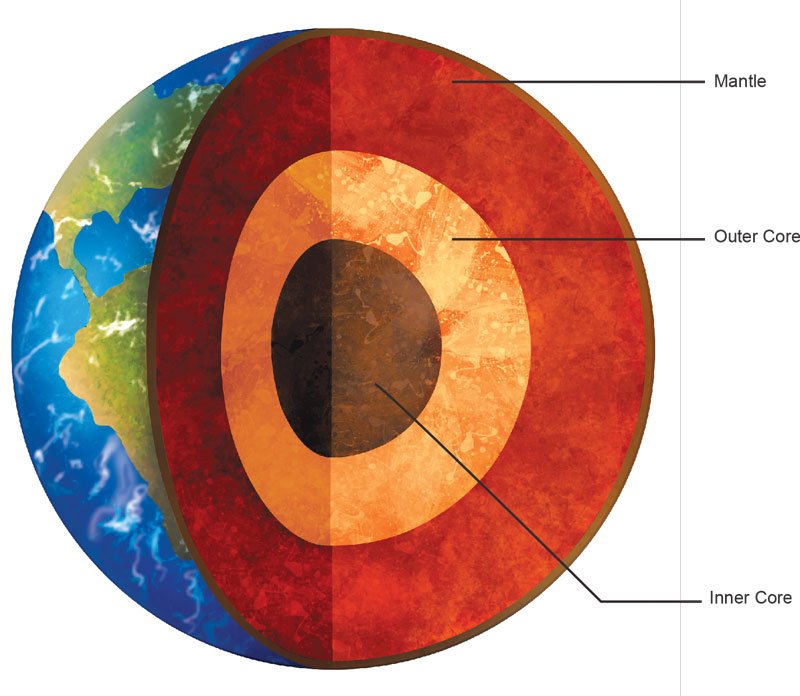The Core: The core is the innermost, deepest, and the hottest layer of the Earth. It is believed that this part of the Earth is made up of two layers: an inner core (dark brown) and an outer core (yellow). The inner core is solid and the outer core is super-heated liquid molten lava. This part is the hottest and the densest layer of the Earth due to the presence of the lava. The core is a thin layer that constitutes up to 16% of the planet’s volume. It is mainly composed of iron and nickel.
Outer Core: The outer core is the peripheral part of the core. This part of the Earth’s core is mostly composed of iron and nickel. These two metals are present in the form of an alloy (a mixture of metallic elements) in the outer core. This alloy is very hot (temperature between 4000º-5000°C), due to which the temperature of the outer core is high. The thickness of outer core is about 2300 km. The outer core is very important as the movement of the metals of this core creates a magnetic field on the Earth.
Inner Core: The inner core is the deepest layer of the Earth. The same as outer core, the inner core is made up of nickel and iron, with the ratio of iron on the higher side. The thickness of the inner core is about 1200 km. The iron present in the core is extremely hot (temperature between 5000º-7000°C). The pressure in the inner core is so high that even after having a high temperature, the inner core is in solid state and is not molten. The metals inside the cores are constantly moving which help the cores to rotate regularly. It is also believed that the inner core rotates faster than the entire planet.
The Mantle: The second layer of the Earth is called the mantle. It lies between the crust and the core. This is the thickest layer of the Earth which constitutes up to 83% of the Earth’s volume. It extends up to a depth of 2900 to 3000 km from the crust to the core. This layer is composed of a dark, dense, igneous (silicate) rock with magnesium and iron, and a gooey layer. A gooey layer is a hot layer of magma. The upper mantle and the crust surface is mainly composed of broken pieces called the tectonic plates. These tectonic plates interact with one another and give rise to earthquakes, volcanic eruptions, etc. on the Earth.

